
Nottingham is a city and unitary authority area in Nottinghamshire, East Midlands, England. It is located 110 miles (180 km) north-west of London, 33 miles (53 km) south-east of Sheffield and 45 miles (72 km) north-east of Birmingham. Nottingham is the legendary home of Robin Hood and to the lace-making, bicycle and tobacco industries. The city is also the county town of Nottinghamshire and the settlement was granted its city charter in 1897, as part of Queen Victoria's Diamond Jubilee celebrations. Nottingham is a tourist destination; in 2018, the city received the second-highest number of overnight visitors in the Midlands and the highest number in the East Midlands.

Long Eaton is a town in the Erewash district of Derbyshire, England, just north of the River Trent, about 7 miles (11 km) south-west of Nottingham and 8.5 miles (13.7 km) south-east of Derby. The town population was 37,760 at the 2011 census. It has been part of Erewash borough since 1 April 1974, when Long Eaton Urban District was disbanded.

The Lace Market is a historic quarter-mile square area in the centre of Nottingham, England. It was the centre of the world's lace industry during the British Empire and is now a protected heritage area. It was an area of salesrooms and warehouses for storing, displaying and selling the lace. The Lace Market adjoins Hockley, and both areas now accommodate a variety of bars, restaurants and shops.

John Heathcoat was an English inventor from Duffield, Derbyshire. During his apprenticeship he made an improvement to the warp-loom, so as to produce mitts of a lace-like appearance. He set up his own business in Nottingham but was forced to move away to Hathern in Leicestershire, and after this new factory was attacked by former Luddites in 1816 he moved the business to Tiverton in Devon where it became most successful and established the Tiverton lace-making industry.

Sneinton is a suburb of Nottingham and former civil parish in the Nottingham district, in the ceremonial county of Nottinghamshire, England. The area is bounded by Nottingham city centre to the west, Bakersfield to the north, Colwick to the east, and the River Trent to the south. Sneinton lies within the unitary authority of Nottingham City, having been part of the borough of Nottingham since 1877.
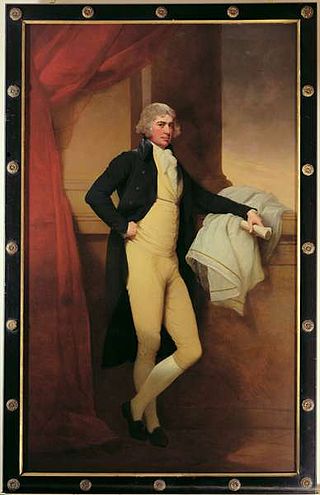
Samuel Oldknow (1756–1828) was an English cotton manufacturer.

Nottingham city centre is the cultural, commercial, financial and historical heart of Nottingham, England. Nottingham's city centre represents the central area of the Greater Nottingham conurbation.
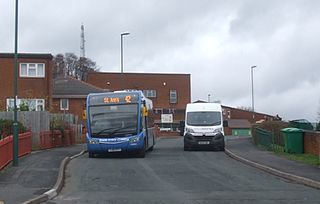
St Ann's is a large district of the city of Nottingham, in the English ceremonial county of Nottinghamshire. The population of the district at the time of the United Kingdom census, 2011 was 19,316.

Nottingham is a city in Nottinghamshire, England.

The Lace Market Theatre is a small, independent amateur theatre in Nottingham, England. It is owned and operated by The Lace Market Theatre Trust Ltd, which is a registered charity.
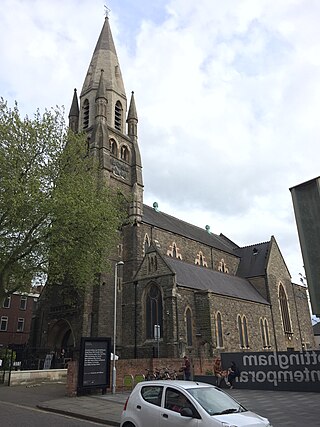
High Pavement Chapel is a redundant church building in Nottingham, Nottinghamshire, England. It is now the Pitcher and Piano public house and is Grade II listed. It was built as, and for most of its existence operated as, a Unitarian place of worship.

The Adams Building, formerly the Adams and Page warehouse on Stoney Street, is the largest building in the Lace Market district of the city of Nottingham in England.
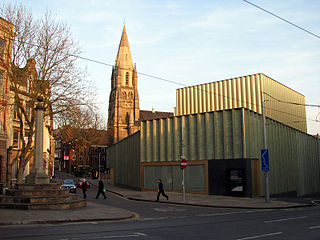
Nottingham Contemporary is a contemporary art centre in the Lace Market area of Nottingham. The gallery opened in 2009.

High Pavement is a street in Nottingham in Nottinghamshire, England. It is one of the earliest streets in the city, and most of its buildings are listed.

The Anglo Scotian Mills is former lace factory in Beeston, Nottinghamshire. It is a Grade II listed building.
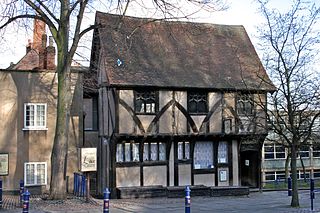
Severn's Building is a Grade II listed building dating from the 15th century in the English city of Nottingham. Originally located in the city's Middle Pavement, it was relocated to the junction of Castle Road and Castle Gate around 1970.

Castle Gate is an historic street near the centre of the English city of Nottingham. The street runs uphill, from a junction with Low Pavement, Lister Gate and Albert Street in the city centre, to Castle Road, near to the entrance to Nottingham Castle. The street is noted for its Georgian houses, many of which are listed buildings. There is also a complex of rock-cut caves, under buildings at the lower end of the street, which is a scheduled monument.

Robert Clarke was an architect based in Nottingham.
Oldknow is a surname. Notable people with the surname include:
St Ann's ward is an electoral ward in the city of Nottingham, England. The ward contains 45 listed buildings that are recorded in the National Heritage List for England. All the listed buildings are designated at Grade II, the lowest of the three grades, which is applied to "buildings of national importance and special interest". The ward is to the north and northeast of the city centre, and is partly commercial and partly residential, with some industrial heritage. The listed buildings include houses, offices, shops and associated structures, former lace factories, churches, public houses, schools, an allotment shed, a monument to a boxer, civic buildings, a clock tower, and a former bus garage.




















